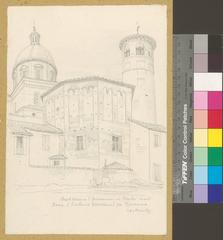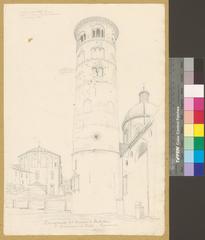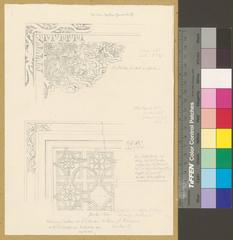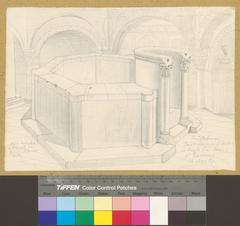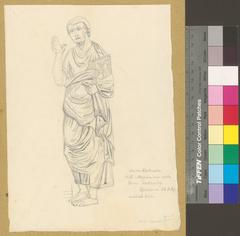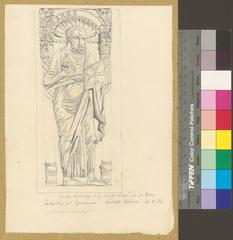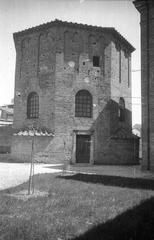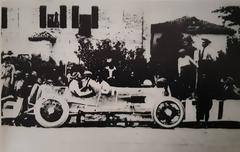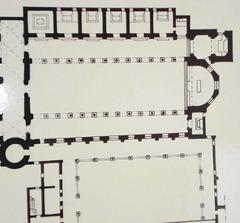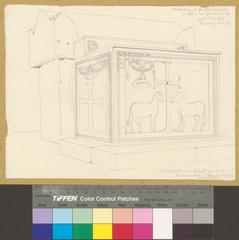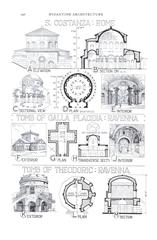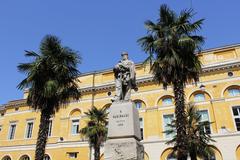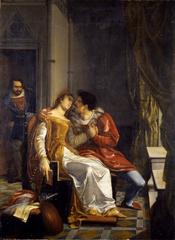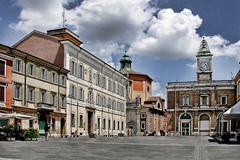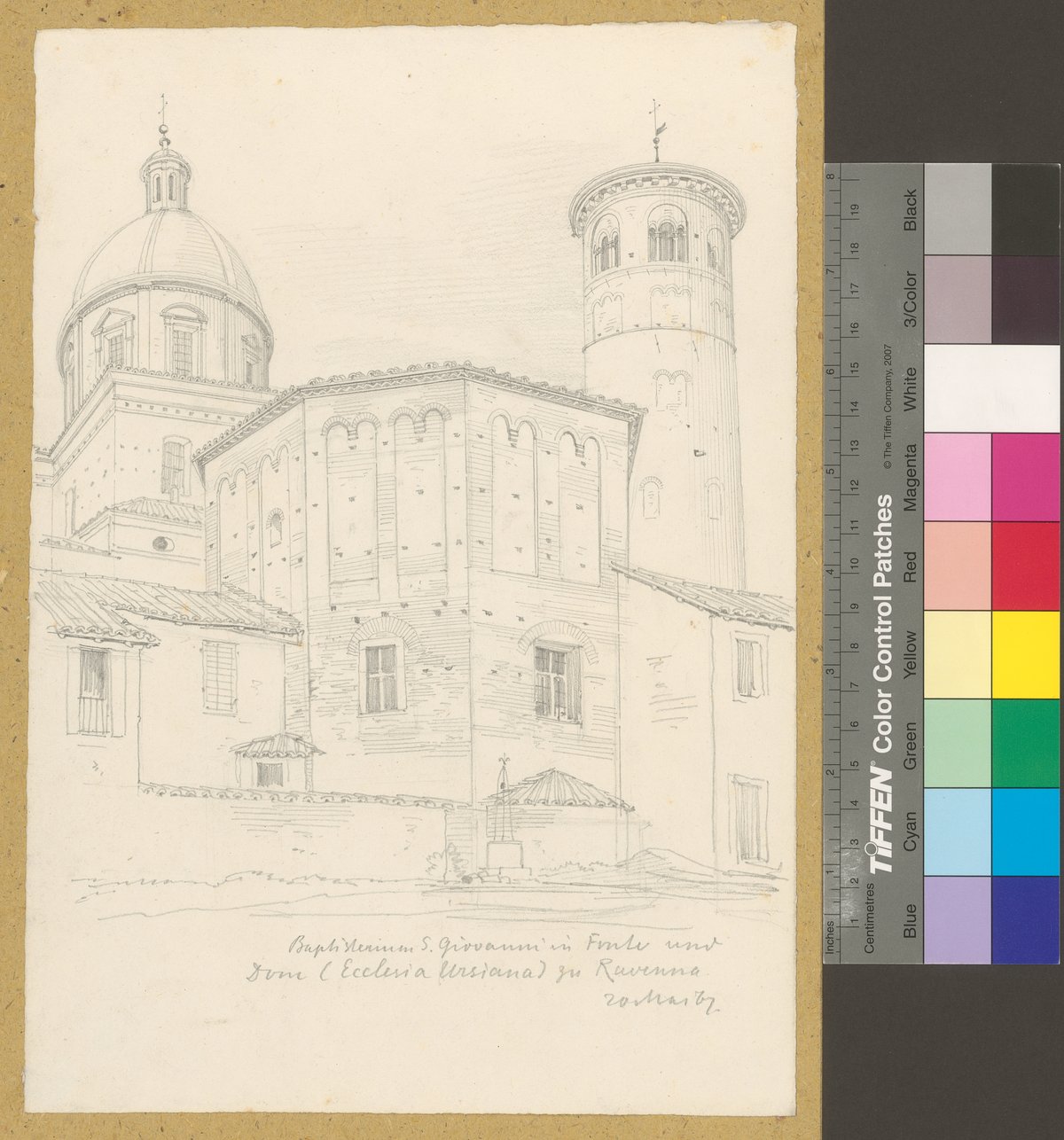
Ravenna Cathedral Visiting Hours, Tickets, and Travel Guide
Date: 15/06/2025
Introduction
Ravenna Cathedral, officially named the Metropolitan Cathedral of the Resurrection of Our Lord Jesus Christ (Cattedrale metropolitana della Risurrezione di Nostro Signore Gesù Cristo), stands at the heart of Ravenna, Italy, as a landmark of enduring spiritual, artistic, and architectural significance. Its history traces the city’s transformation from a Western Roman imperial capital to a pivotal center of early Christian and Byzantine culture.
Initially commissioned in the early 5th century by Bishop Ursus, the original Basilica Ursiana was a monumental expression of Ravenna’s spiritual and political ascent. Over centuries, the cathedral has seen medieval enhancements and an 18th-century Baroque reconstruction, resulting in an extraordinary blend of Romanesque, medieval, and Baroque features. Today, Ravenna Cathedral is not only an active place of worship but also a focal point for exploring the city’s UNESCO World Heritage sites, including the Neonian Baptistery, Basilica of San Vitale, and Mausoleum of Galla Placidia (Ravenna Tourism Website).
This guide provides essential and up-to-date visitor information—including visiting hours, ticketing, accessibility, and travel tips—while detailing the cathedral’s architectural evolution and artistic heritage. Whether you’re a history enthusiast, art lover, or cultural traveler, Ravenna Cathedral offers a profound immersion in Italy’s layered religious and artistic legacy (Renato Prosciutto’s Ravenna Cathedral Guide).
Contents
- Introduction
- History and Architecture
- Early Foundations: Basilica Ursiana
- Medieval Transformations and the Bell Tower
- Baroque Rebuilding in the 18th Century
- Religious and Civic Role
- Artistic Heritage and Features
- Visiting Hours, Tickets, and Accessibility
- Travel Tips and Nearby Attractions
- Frequently Asked Questions (FAQ)
- Visuals and Media Suggestions
- Conclusion and Visitor Recommendations
- Sources
History and Architecture
Early Foundations: Basilica Ursiana
Consecrated in 407 CE by Bishop Ursus, the original Basilica Ursiana was dedicated to the Holy Resurrection. This grand basilica, constructed as Ravenna emerged as the Western Roman Empire’s capital, featured five naves, a distinctive semicircular apse (polygonal outside), and rich marble and mosaic decoration (Renato Prosciutto; Ravennamosaici). The cathedral was central to Ravenna’s religious life, forming a triad with the Neonian Baptistery and Bishop’s Palace.
Medieval Transformations and the Bell Tower
Through the 10th and 11th centuries, the cathedral underwent significant changes reflecting Ostrogothic and Byzantine influences. The most notable addition is the cylindrical bell tower—a rare medieval structure in Ravenna—contrasting with later architectural elements. The period also saw apse mosaics and a crypt constructed, further enhancing the cathedral’s spiritual and artistic stature (Facts.net).
Baroque Rebuilding in the 18th Century
By the 18th century, structural deterioration led to a comprehensive Baroque reconstruction under Archbishop Maffeo Nicolò Farsetti, with architect Giovan Francesco Buonamici leading the redesign (1734–1745). The new cathedral retained the Latin cross plan and incorporated an ornate Baroque façade, a grand elliptical dome (redesigned by Giuseppe Pistocchi), and richly decorated chapels. Elements from the original basilica, such as early Christian sarcophagi, were preserved and integrated (Catholic Shrine Basilica).
Religious and Civic Role
The cathedral has long served as the seat of Ravenna’s archbishops and a focal point for major liturgical celebrations, episcopal ordinations, and civic events. Its presence in Piazza Duomo, alongside the Archiepiscopal Palace and Neonian Baptistery, forms the nucleus of Ravenna’s religious and historical identity (Turismo Ravenna).
Throughout history, the cathedral has symbolized the continuity of orthodoxy and the city’s status as a crossroads of Western and Eastern Christian traditions (UNESCO). It remains an active house of worship and a vibrant venue for community and cultural events.
Artistic Heritage and Features
- Baroque Paintings: Notable works by Domenico and Andrea Barbiani, among other 18th- and 19th-century artists.
- Sarcophagi: Early Christian sarcophagi preserved in the right chapel, providing a direct link to Ravenna’s origins.
- Bell Tower: The medieval cylindrical bell tower stands as a rare relic from the original structure.
- High Altar and Apse: Adorned with religious iconography and surrounded by ornate columns.
- Crypt: Open to visitors, offering insight into early Christian traditions.
- Elliptical Dome: Stucco and fresco decoration, illuminated by natural light.
- Archiepiscopal Museum and Chapel: Adjacent to the cathedral, this UNESCO-listed site houses exceptional early Christian mosaics (Travel to Italy Guide).
While the cathedral itself has lost its original mosaics, its proximity to UNESCO monuments like the Basilica di San Vitale and Mausoleum of Galla Placidia situates it within one of the world’s richest concentrations of early Christian and Byzantine art (The Geographical Cure; World Heritage Site).
Visiting Hours, Tickets, and Accessibility
Opening Hours
- Ravenna Cathedral: Generally open daily from early morning (7:00–7:30 a.m.) to late afternoon (5:00–6:30 p.m.), with possible midday closures and variation on religious holidays. Always verify current hours on the Turismo Ravenna website.
Tickets and Entry
- Cathedral: Entry is usually free, as it is an active place of worship.
- UNESCO Mosaics Sites: Combined ticket (approx. €10–12) grants access to major monuments (e.g., Basilica di San Vitale, Mausoleum of Galla Placidia, Neonian Baptistery, Archiepiscopal Museum). Tickets are available onsite and online; advance purchase is advised during peak seasons (World Heritage Site).
Accessibility
- Mobility: The main entrance is accessible via ramps; most areas are wheelchair-friendly. Some adjacent historical sites may have uneven flooring or steps.
- Facilities: Restrooms and cafés nearby; staff can assist visitors with special needs.
Travel Tips and Nearby Attractions
Getting There
- By Foot: Ravenna’s compact city center makes walking the best way to explore.
- By Car: Park in designated lots outside the historic core and walk to the cathedral.
- Public Transport: Frequent buses and trolleys; taxis available.
Dress Code & Conduct
- Modest attire required (cover shoulders and knees).
- Photography allowed without flash; restrictions may apply during services.
Best Times to Visit
- Early mornings or late afternoons during spring or autumn offer the most comfortable weather and fewer crowds (HikersBay).
Guided Tours & Audio Guides
- Multilingual tours and audio guides are available through the cathedral or tourism offices.
Safety
- Ravenna is considered very safe for tourists; standard precautions apply.
Nearby Attractions
- Basilica di San Vitale: World-famous for its 6th-century mosaics (Full Suitcase).
- Mausoleum of Galla Placidia: Small chapel with stunning 5th-century mosaics.
- Neonian Baptistery: The city’s oldest monument, with a remarkable mosaic dome.
- Archiepiscopal Museum and Chapel: Houses rare early Christian mosaics.
All are within easy walking distance, making the cathedral an ideal starting point for exploring Ravenna’s UNESCO World Heritage ensemble.
Frequently Asked Questions (FAQ)
Q: What are Ravenna Cathedral’s opening hours?
A: Usually from early morning until late afternoon, with closures during services and holidays. Verify on the official Turismo Ravenna site.
Q: Is there an entry fee?
A: Entry to the cathedral is typically free. Combined tickets are required for other major mosaic sites.
Q: Is the cathedral accessible?
A: Yes, the main entrance is accessible; some nearby sites may have limited access.
Q: Are guided tours available?
A: Yes, in multiple languages. Audio guides are also offered.
Q: When is the best time to visit?
A: Early mornings or late afternoons in spring or autumn for fewer crowds and pleasant weather.
Visuals and Media Suggestions
- High-quality photos of the cathedral’s façade, dome, nave, and bell tower, with descriptive alt tags such as “Ravenna Cathedral visiting hours.”
- Interior shots highlighting the altar, chapels, and crypt.
- Images of nearby mosaics at San Vitale and the Neonian Baptistery.
- Interactive maps and (if available) virtual tours.
Conclusion and Visitor Recommendations
Ravenna Cathedral embodies over 1,500 years of religious, artistic, and civic history. Its architectural evolution—from the ancient Basilica Ursiana, through medieval and Baroque transformations—mirrors the city’s prominence as a crossroads between Western and Eastern Christianity. The cathedral’s strategic position in Piazza Duomo, within walking distance of other UNESCO monuments, offers visitors a unique opportunity to experience Ravenna’s mosaic heritage and early Christian artistry in a single, accessible itinerary.
For the most seamless experience, plan your visit by checking current opening hours and ticketing options on official resources such as Turismo Ravenna. Enhance your exploration with guided tours or the Audiala app for audio guidance. Embrace the serene atmosphere, respect preservation guidelines, and immerse yourself in a journey through centuries of Italian spiritual and cultural tradition.
Sources and Further Reading
- Renato Prosciutto’s Ravenna Cathedral Guide
- Catholic Shrine Basilica: Cathedral of the Resurrection of Our Lord Jesus Christ, Ravenna
- Turismo Ravenna: Cathedral Basilica Ursiana
- Sophie’s Suitcase: Ravenna, Italy
- World Heritage Site: Ravenna
- Facts.net: 32 Facts About Ravenna
- The Travel Folk: Things to Do in Ravenna
- Travel to Italy Guide: Beautiful Mosaics in Ravenna
- HikersBay: Ravenna Tourist Information
- Full Suitcase: Ravenna Best Things to Do
- The Geographical Cure: Guide to Mosaics in Ravenna
